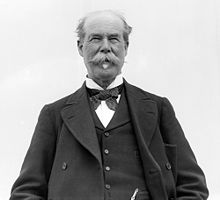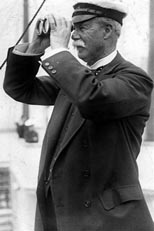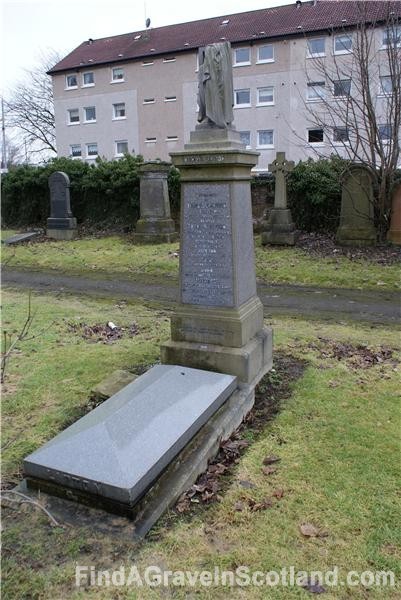Member Login
Free Search
Enter First Name, Last Name or Full Name and click Search,or click on the Advanced Search link for more options
Famous Scots - Sir Thomas Lipton


UK tea-trading was focused in London's Mincing Lane) in order to sell teas at unprecedented prices to the untapped poor working class market. In order to provide his shops with goods Lipton bought plantations and in doing so - amongst other things - he established the Lipton tea brand which is still in existence today.
Thomas Lipton visited Sri Lanka in the 1890s and made business deals with James Taylor the man who introduced tea plantations to Sri Lanka (Ceylon). Lipton's company purchased tea from Sri Lanka and distributed it through Europe and the USA. In 1902 he was created a Baronet, of Osidge in the Parish of Southgate in the County of Middlesex.
King Edward VII and King George V both shared their interest in yachting with Lipton and enjoyed his company. Between 1899 and 1930 he challenged the American holders of the America's Cup through the Royal Ulster Yacht Club five times with his yachts called Shamrock through Shamrock V. His well publicised efforts to win the cup, which earned him a specially designed cup for "the best of all losers", made his tea brand famous in the U.S. As a self-made man Lipton, however, was no natural member of the British upper class and the Royal Yacht Squadron only admitted him shortly before his death. Lipton was inducted into the America's Cup Hall of Fame in 1993.
Before the first Football World Cup was held in 1930, Thomas Lipton donated the Sir Thomas Lipton Trophy which was contested in two international tournaments in Turin in 1909 and 1911.
He also donated the Copa Lipton trophy which has been contested between Argentina and Uruguay since 1905.
Lipton came to his home, Osidge, in Southgate, London, from Muswell Hill in 1892. Before moving in, he redecorated the house completely, built a new billiards room and moved the existing pathway as far away from the house as possible. Before the coming of the motor car, his home's newly enlarged stables contained at least three pairs of fast carriage horses, of which he was proud. He was driven to his offices in City Road each day, and did not use the nearby railway.
Sir Thomas Lipton helped medical voluntary organizations during World War 1. He gave to disposal his yachts to Red Cross, Scottish Women's Hospitals Committee of Dr Elsie Inglis, Serbian Supporting Fund etc. for transport of medical volunteers (doctors and nurses) same as medical supply. During the winter 1914–1915 and spring 1915 in Serbia was several British i.e. Commonwealth hospital teams working together with Serbian military and civil doctors and nurses. Catastrophic typhus epidemic killed thousands of civilians, wounded and unwounded soldiers and war prisoners. But first victims were medical staffs. Sir Thomas Lipton went aboard his yacht "Erin" to Thessaloníki over Sardinia, Malta and Athens. The aim of his travel was Serbia at the moment when epidemic was at the top. He visited hospitals and medical missions in Belgrade, Kragujevac, Niš, Vrnjačka Banja and some more. He was very popular at the people due to his modest requests. He asked only for modest lodging, requested for meals only what common people eat in these war conditions. He liked to pose with Serbian officers and soldiers at photographs. Except he visited many hospitals encouraging doctors, nurses and soldiers, he found time to visit traditional fairs, to take a part in blackberry gathering and fishing. Sir Thomas Lipton was declared for the honor citizen of the town of Niš.
Author Herbert W Newby writes in a book about Southgate in 1949 "Sir Thomas was proud of his successes in life, and any reference to him made in any publication was always carefully cut out and pasted into a book kept for this purpose. These books formed a most interesting section of his library. He was a very genial man to meet and always put a stranger quickly at ease. I met him on several occasions and found him without any form of snobbery.
Thomas Lipton died at Osidge on 2 October 1931. He bequeathed the majority of his fortune to his native city of Glasgow, including his yachting trophies, which are now on display at the Kelvingrove Art Gallery and Museum
Video Link
http://www.britishpathe.com/record.php?id=20179
Headstone Photograph

Further Information
LastName: SIR THOMAS LIPTON
Cemetery: Sothern Necropolis
Caledonia Road
Town: Glasgow
Region: Glasgow and Clyde Valley
Country: Scotland
Please Note, the marker on this map indicates the Cemetery location, not the location of a particular grave.



